Kaye Lynne Booth's Blog: Writing to be Read, page 48
November 29, 2023
Mind Fields: Two Poems Addressing The World’s Violence
 Untitiled
UntitiledThere is no excuse for the agony of the world.
There is no excuse for a single person to be starving.
No excuse for anyone to be without a safe home.
No excuse for children to be frightened of invisible menace.
No excuse, no excuse, no excuse.
Anyone who tells you this killing, this maiming,
this bombing is justified,
is revealing a criminal lack of imagination.
There is no excuse to be without a creative idea,
a new way to solve a problem,
no excuse, no excuse.
To be mired in the endless slavery
of historical cause and effect
is no excuse.
To be defending one’s self from oppression
is no excuse.
To be reacting to outside danger
is no excuse.
There is never an excuse
to use violence, not even to prevent greater violence.
Using violence always causes greater violence.
No excuse for the weakness of force,
no justification for violence.
We had to stop Hitler, we have to stop Bin Laden,
is that an excuse? No. Is that an explanation?
Perhaps. Must I live with this explanation?
Evidently.
Must I treat it as a rational solution to any brutality?
Never. There is no excuse.
What can I do about this insoluble problem?
I don’t know. Write poems?
Do you have any better ideas?
If you do, and it is not an excuse
for adding agony to the world,
please, please, tell me, tell everyone
right now.
Letter From The Afterlife Of A Terrorist BomberI thought I would be in Paradise
but I am in unspeakable hell.
The fire, the fire!
I thought it would only burn for a second,
but it keeps burning!
I thought I would lose consciousness
and wake up in heaven,
but I am stuck now for an eternity
in agony!
The screams of the innocent dying
are like poisoned darts,
lancing the exposed nerves of my inmost soul.
The tears of the bereaved in their hundreds and thousands
rain upon me like acid.
And the worst hell of all is my regret,
my infinite regret,
that I was so stupid, so gullible, so callous,
so easily swayed by insipid argument,
so readily moved to escape my living depression
by casting it upon others.
The fire, the fire! The rocket fuel
sears me for ten thousand years!
The screams and the grief that blame me, rightly,
crush me under a million tons of leaden metal and concrete!
Allah, Allah, I was not merciful, I was not compassionate,
and now when I call to you I see the grit of your robe
as you turn away from me.
I thought I would awake in Paradise.
What a dreadful dreadful mistake!
___________________________________________________
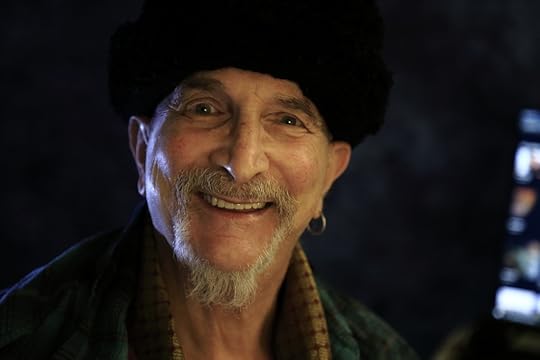
Arthur Rosch is a novelist, musician, photographer and poet. His works are funny, memorable and often compelling. One reviewer said “He’s wicked and feisty, but when he gets you by the guts, he never lets go.” Listeners to his music have compared him to Frank Zappa, Tom Waits, Randy Newman or Mose Allison. These comparisons are flattering but deceptive. Rosch is a stylist, a complete original. His material ranges from sly wit to gripping political commentary.
Arthur was born in the heart of Illinois and grew up in the western suburbs of St. Louis. In his teens he discovered his creative potential while hoping to please a girl. Though she left the scene, Arthur’s creativity stayed behind. In his early twenties he moved to San Francisco and took part in the thriving arts scene. His first literary sale was to Playboy Magazine. The piece went on to receive Playboy’s “Best Story of the Year” award. Arthur also has writing credits in Exquisite Corpse, Shutterbug, eDigital, and Cat Fancy Magazine. He has written five novels, a memoir and a large collection of poetry. His autobiographical novel, Confessions Of An Honest Man won the Honorable Mention award from Writer’s Digest in 2016.
More of his work can be found at www.artrosch.com
Photos at https://500px.com/p/artsdigiphoto?view=photos
__________________________________________________________________
Want to be sure not to miss any of Arthur’s “Mind Fields” segments? Subscribe to Writing to be Read for e-mail notifications whenever new content is posted or follow WtbR on WordPress. If you find it interesting or just entertaining, please share.
November 27, 2023
WordCrafter News: Spend the Holidays with WordCrafter
 NoNoWriMo 2023
NoNoWriMo 2023

All through the month of November, I was busily working on Sarah, the second book in my Women in the West adventure series. I have a Kickstarter campaign planned for this book in January, and it will be released through distributors in March. I have to say that I was on a roll during the first three weeks, only missing the daily goal of 1667 words on all but three of those days. On the 21st, I registered over 35,000 words, with nine days left to reach the overall goal of 50,000.
Then, my computer screen gave up the ghost, and I had no image to work with, bringing me to a grinding halt. I couldn’t retrieve or back up my document, let alone write more.
Fortunately, I have a guardian angel and life long friend, who values my writing and may very well be my biggest fan. She made sure I had a new laptop coming as soon as she heard about my dilemma, in the hopes of saving the day. She is my oldest and dearest friend, and I always seem to hear from her just when I need her. This Thanksgiving session I made sure to offer up special thanks for her friendship.
WordCrafter Holiday Book ExtravaganzaYou won’t want to miss the WordCrafter Book Extravaganza when you’re looking for those perfect holiday gifts. December 1st – 22nd all books on the WordCrafter Press backlist will be available for under $3 each. The perfect prices for the perfect gifts, because we all know that books make wonderful gifts! Or, you can pick up those titles that have been sitting on your tbr list for yourself, so you’ll have plenty of stories to entertain you during the holiday season.
Books included in the Extravaganza:
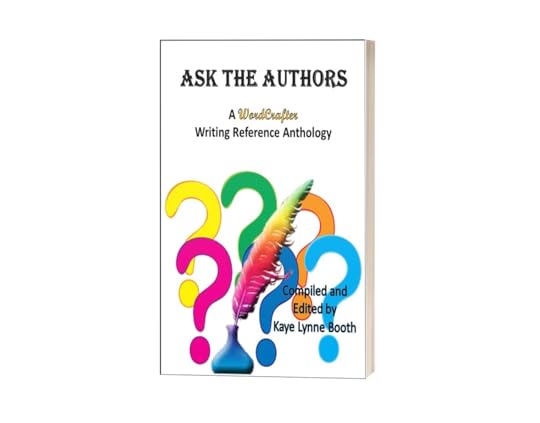


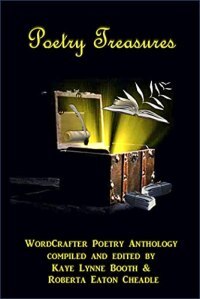
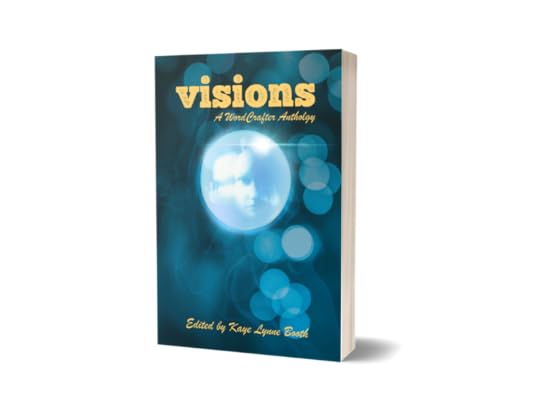
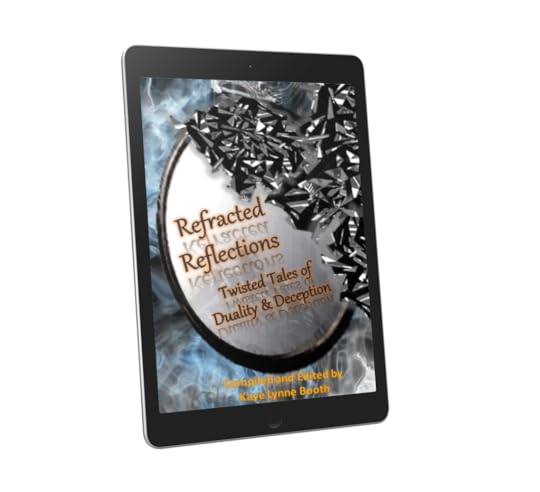

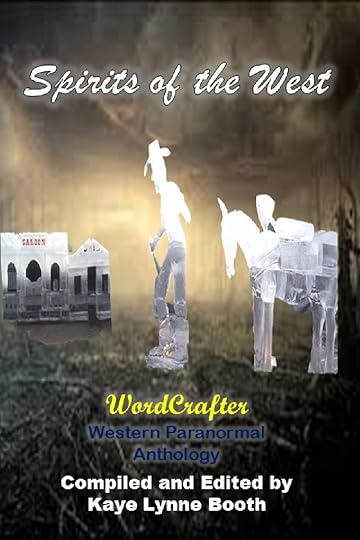
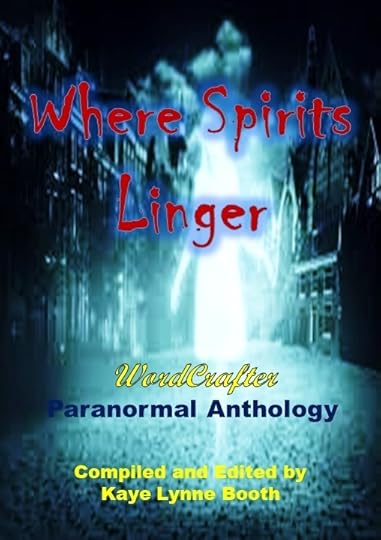

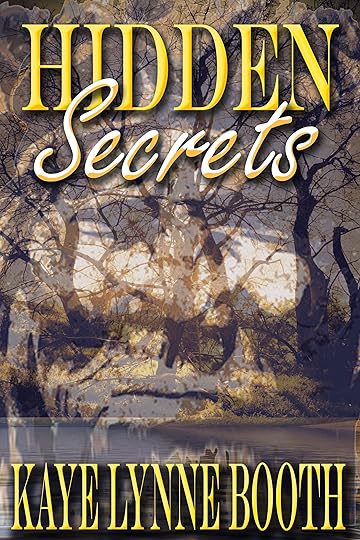
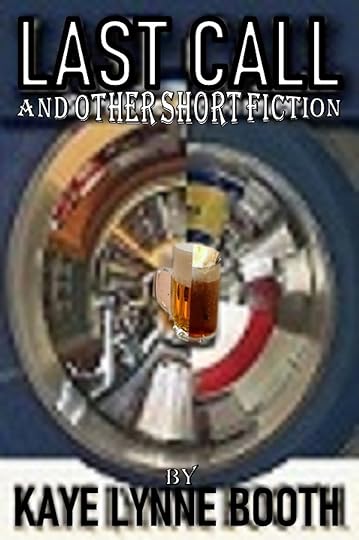
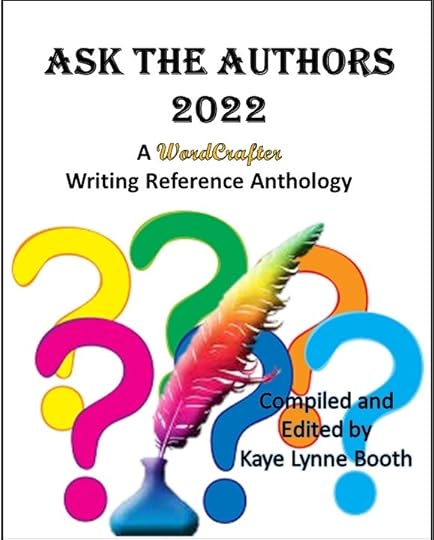
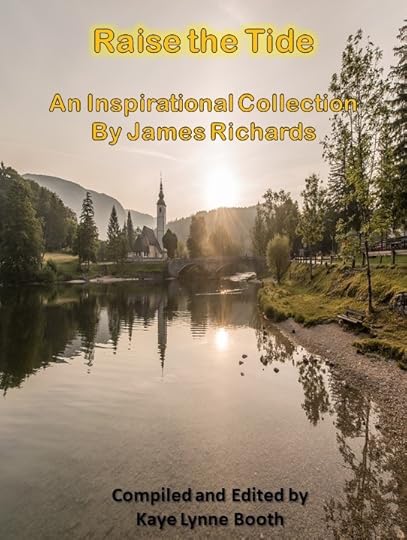
 Doubling Down on Book Reviews
Doubling Down on Book Reviews

Starting in November, I’ve posted extra Saturday Book Reviews to get in all the reviews I’ve committed to done before the end of the year. But I discovered that I had so many reviews that I was behind on, that one extra review a week wasn’t enough. So, in December I will also be posting Sunday Book Reviews as well. And I may even post some random extras, if I get all the way caught up. That’s right. All through December you can catch at least three book reviews per week, and just in time for the holiday season, because we all know books are the best gifts for friends and loved ones, or even just to treat yourself.
November 25, 2023
Book Review: Ever So Gently – A Collection of Poetry
 About the Book
About the Book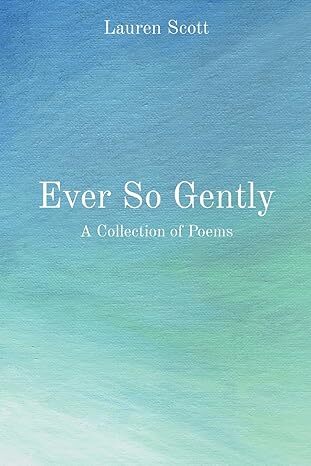
In Ever So Gently, Lauren Scott shares her strong link to nature, taking the reader on a tranquil walk through a redwood grove. You’ll find an invitation to sit quietly on a patio, captivated by the simple beauty of a hummingbird. She’ll entice you to revel on the shore of a freshwater lake, mesmerized by its stunning beauty.
Scott shares how love has shaped her life. From that first delicious kiss to celebrating decades of marriage through a love that deepens over time. How her heart melted when she became a mom, then ached when her children started their adult lives across country. And how her adorable canine companions found their way into her heart.
Scott underscores how life presents mysteries we struggle to solve. We can’t help but ponder the deeper meaning of a simple vision. She prompts you to reminisce and reflect on your past, present, and future. Through the ups and downs. what matters most is to love and live ever so gently.
Purchase Link:
My ReviewFor me, poetry is best enjoyed in print, where I can hold the book in my hands and leaf through the pages, taking in each poem in small doses, and revisting those poems which have sparked further thought in my mind. So, I was tickled to receive a print copy of Ever So Gently: A Collection of Poetry from author Lauren Scott. In this delightful collection, we hear the author’s confident approach to life, feel her inner appreciation of the natural world arond her, and gain insight into value of connection with the people she loves and cares about.
Poetry is so personal, offering a window into the author’s soul, and Ever So Gently does this beautifully. Many of the poems contained within resonated with me on a personal level. As a both nature and animal lover, the vivid images of the cautiously flitting hummingbird, a garden renewed, and beloved pets helped me to feel the moments described within each, as if witnessing or experiencing them.
Messages from the Sealisten intently
inhale, exhale, feel the calm
your soul will tank you
secrets ride the waves
ebbing, flowing in turquoise
we are not privy
whispers in the surf
ambiguous to discern
relish in their song
_________________________
For Lauren Scott, nature is soothing, healing. I can relate with that as nature is also where I go for solace.
Chilling EmbraceI have been embraced
by the chilling presence
of lonliness.
I have wondered where the niche
designed for me exists in this world
in which my breaths originate.
I have waited for the glow
to emerge behind the shadows.
But when I take that soft step
into the splendor of nature,
listen to the treeswhisper their sagacity,
feel the flowing rivers move my pain,
creating vast distance between it and me,
I have been revived by the compassion
that nature offers so unselfishly.
_____________________________
But my very favorites were the poems in which she expressed her love of the written word, a love that I share, so can relate well with.
BooksStories, poetry
Compelling, transporting, entertaining
Turning pages is exciting
Paperbacks
______________________________
But my true favorite is the poem that shares the title the book is so aptly named for. In it I see clearly the author’s positive, grounded attitude toward life. A wonderful outlook, to be sure.
Ever So GentlySometimes we get lost
in our thoughts…
losing focus of the stars
lighting up the night sky.
We tumble too deeply
into the frontal lobe,
allowing negative thoghts
to awaken, to throw a tantrum.
Remember, the breeze carries
burdens down river
and across oceans,
majestic trees sway with joy,
sheltering from shadows,
and the light shines even if only
a slight glimmer slips through.
Its glow will grow ever so gently
into a bright beacon of hope
rising with the golden sun
bringing clarity to our vision.
____________________________
With her uplifting poetic verse Lauren Scott basks in the earth’s beauty, cherishes loved ones, ponders life’s mysteries. Highly recommended. I give Ever So Gently five quills.

__________________________________________________________________
Kaye Lynne Booth does honest book reviews on Writing to be Read in exchange for ARCs. Have a book you’d like reviewed? You can request a review here.
November 24, 2023
Book Review: The Healer
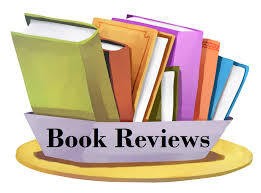 About the Book
About the BookHer touch could save multitudes. But even with superhuman powers, will one high-school senior survive a battle with almighty deities?
Seventeen-year-old Hope wishes she could heal every wound. But after a heartbreaking ordeal during a hospital visit, her walk home turns into a fight for survival when she’s attacked by a two-tailed demon cat. And though she tries to shake off the incident, the sudden arrival of a pair of overly curious new classmates sets off the miracle-worker’s alarm bells.
Working hard to keep a low profile, she’s horrified when one of the handsome duo tricks her into mending his wounds after a schoolyard brawl. But when the two boys reveal their divine origins and her fated destiny, Hope plunges into a race to unlock her mystic potential before hellish forces turn them all to ashes.
As the veil between life and death unravels, can she claim her future and shield humanity?
The Healer is the action-packed first book in The Healer YA fantasy series. If you like empowered heroines, Asian gods, and romance that lasts through the ages, then you’ll love C. J. Anaya’s stunning coming-of-age tale.
Buy The Healer today to take a wild supernatural ride through history!Purchase Link: https://www.amazon.com/Healer-Fated-Mates-Fantasy-Romance-ebook/dp/B01BZB7PMI
My ReviewThe Healer, by C.J. Anaya is a delightful Y.A. paranormal fantasy novel about Hope, a 17-year-old girl with healing abilities which is intricately woven into Japanese folklore. Hope would heal the entire world if she could, or would she?
On the one hand, Hope is an average teenaged girl, with average teenaged problems. But Hope has a side which she keeps secret, even from her best friend, Angie. Only she, her father, and the young leukemia patient whom she’s been trying to heal unsuccessfully and has built a friendship with. But when two students show up at her school, who seem to know of her healing abilities, things begin to get weird.
Hope finds herself strangely attracted to both Tie and Victor, although she doesn’t trust either. They are not your typical high school students. Only by discovering her true past, will Hope uncover the mysteries of her abilities and learn of the prophecy regarding her fate. When she does, she is faced with a decision. Is it really her destiny to save the world, or will Hope choose to follow her heart and chose her own fate?
A beautifully crafted coming of age story. I give The Healer five quills.

_________________________________________
Kaye Lynne Booth does honest book reviews on Writing to be Read in exchange for ARCs. Have a book you’d like reviewed? You can request a review here.
November 21, 2023
Dark Origins – Remembrance Month edition: War book quote quiz #DarkOrigins #Warnovelsquiz

I am not going to discuss the dark origins of war today. We all have our own views on what those are and they are all correct.
Last year I did a few book quiz posts on my home blog, Roberta Writes. I shared quotes from a number of famous books and readers (without using google) guessed which books they were from. I thought for this November post of Dark Origins, I would share quotes from a number of well know books about war. I will give you a clue to help you with your guesses.
This book is set in Asia and was written by an Australian-born British writer, screenwriter, director and World War II veteran and prisoner of war.Quote 1: “Leave the problems of God to God and karma to karma. Today you’re here and nothing you can do will change that. Today you’re alive and here and honored, and blessed with good fortune. Look at this sunset, it’s beautiful, neh? This sunset exists. Tomorrow does not exist. There is only now. Please look. It is so beautiful and it will never happen ever again, never, not this sunset, never in all infinity.
Lose yourself in it, make yourself one with nature and do not worry about karma, yours, mine, or that of the village.”
Quote 2: “Love is a Christian word, Anjin-san. Love is a Christian thought, a Christian ideal. We have no word for ‘love’ as I understand you to mean it. Duty, loyalty, honor, respect, desire, those words and thoughts are what we have, all that we need.”
Quote 3: “Patience means holding back your inclination to the seven emotions: hate, adoration, joy, anxiety, anger, grief, fear. If you don’t give way to the seven, you’re patient, then you’ll soon understand all manner of things and be in harmony with Eternity.’ ”
This author was an English writer and philologist. From 1925 to 1945 hew was the Rawlinson and Bosworth Professor of Anglo-Saxon and a Fellow of Pembroke College, both at the University of Oxford.“A hunted man sometimes wearies of distrust and longs for friendship.”
“The way is shut.
Then they halted and looked at him and saw that he lived still; but he did not look at them. The way is shut, his voice said again. It was made by those who are Dead, and the Dead keep it, until the time comes. The way is shut.”
“It is not despair, for despair is only for those who see the end beyond all doubt. We do not. It is wisdom to recognize necessity, when all other courses have been weighed, though as folly it may appear to those who cling to false hope.”
The title of this book means it is an impossible situation because you cannot do one thing until you do another thing, but you cannot do the second thing until you do the first thing“The enemy is anybody who’s going to get you killed, no matter which side he is on.”
“What is a country? A country is a piece of land surrounded on all sides by boundaries, usually unnatural. Englishmen are dying for England, Americans are dying for America, Germans are dying for Germany, Russians are dying for Russia. There are now fifty or sixty countries fighting in this war. Surely so many countries can’t all be worth dying for.”
“When I look up, I see people cashing in. I don’t see heaven or saints or angels. I see people cashing in on every decent impulse and every human tragedy.”
This American author’s legacy to literature is his style“Dying was nothing and he had no picture of it nor fear of it in his mind. But living was a field of grain blowing in the wind on the side of a hill. Living was a hawk in the sky. Living was an earthen jar of water in the dust of the threshing with the grain flailed out and the chaff blowing. Living was a horse between your legs and a carbine under one leg and a hill and a valley and a stream with trees along it and the far side of the valley and the hills beyond.”
“This was the greatest gift that he had, the talent that fitted him for war; that ability not to ignore but to despise whatever bad ending there could be. This quality was destroyed by too much responsibility for others or the necessity of undertaking something ill planned or badly conceived. For in such things the bad ending, failure, could not be ignored. It was not simply a possibility of harm to one’s self, which could be ignored. He knew he himself was nothing, and he knew death was nothing. He knew that truly, as truly as he knew anything. In the last few days he had learned that he himself, with another person, could be everything. But inside himself he knew that this was the exception. That we have had, he thought. In that I have been most fortunate. That was given to me, perhaps, because I never asked for it. That cannot be taken away nor lost. But that is over and done with now on this morning and what there is to do now is our work.”
“He smelled the odor of the pine boughs under him, the piney smell of the crushed needles and the sharper odor of the resinous sap from the cut limbs. … This is the smell I love. This and fresh-cut clover, the crushed sage as you ride after cattle, wood-smoke and the burning leaves of autumn. That must be the odor of nostalgia, the smell of the smoke from the piles of raked leaves burning in the streets in the fall in Missoula. Which would you rather smell? Sweet grass the Indians used in their baskets? Smoked leather? The odor of the ground in the spring after rain? The smell of the sea as you walk through the gorse on a headland in Galicia? Or the wind from the land as you come in toward Cuba in the dark? That was the odor of cactus flowers, mimosa and the sea-grape shrubs. Or would you rather smell frying bacon in the morning when you are hungry? Or coffee in the morning? Or a Jonathan apple as you bit into it? Or a cider mill in the grinding, or bread fresh from the oven?”
This author was an English Voluntary Aid Detachment nurse, writer, feminist, socialist and pacifist“How fortunate we were who still had hope I did not then realise; I could not know how soon the time would come when we should have no more hope, and yet be unable to die”
“When I was a girl . . . I imagined that life was individual, one’s own affair; that the events happening in the world outside were important enough in their own way, but were personally quite irrelevant. Now, like the rest of my generation, I have had to learn again and again the terrible truth . . . that no life is really private, or isolated, or self-sufficient. People’s lives were entirely their own, perhaps–and more justifiably–when the world seemed enormous, and all its comings and goings were slow and deliberate. But this is so no longer, and never will be again, since man’s inventions have eliminated so much of distance and time; for better, for worse, we are now each of us part of the surge and swell of great economic and political movements, and whatever we do, as individuals or as nations, deeply affects everyone else.”
“When the sound of victorious guns burst over London at 11 a.m. on November 11th, 1918, the men and women who looked incredulously into each other’s faces did not cry jubilantly: ” We’ve won the war! ” They only said: ” The War is over.”
Let me know your guesses in the comments. I will share the answers in the comments a few days after the post goes live.
About Roberta Eaton Cheadle
Award-winning, bestselling author, Roberta Eaton Cheadle, is a South African writer and poet specialising in historical, paranormal, and horror novels and short stories. She is an avid reader in these genres and her writing has been influenced by famous authors including Bram Stoker, Edgar Allan Poe, Amor Towles, Stephen Crane, Enrich Maria Remarque, George Orwell, Stephen King, and Colleen McCullough.
Roberta has two published novels and has horror, paranormal, and fantasy short stories included in several anthologies. She is also a contributor to the Ask the Authors 2022 (WordCrafter Writing Reference series).
Roberta also has thirteen children’s books and two poetry books published under the name of Robbie Cheadle, and has poems and short stories featured in several anthologies under this name.
Roberta’s blog features discussions about classic books, book reviews, poetry, and photography. https://roberta-writes.com/.
Find Roberta Eaton CheadleBlog: https://wordpress.com/view/robertawrites235681907.wordpress.com
Twitter: https://twitter.com/RobertaEaton17
Facebook: https://www.facebook.com/robertawrites
Amazon: https://www.amazon.com/Roberta-Eaton-Cheadle/e/B08RSNJQZ5
_____________________________________________________________________________________________
Want to be sure not to miss any of Robbie’s “Dark Origins” segments? Subscribe to Writing to be Read for e-mail notifications whenever new content is posted or follow WtbR on WordPress. If you found it interesting or entertaining, please share.
November 20, 2023
Spread the Love! Leave a Review.

The above meme is found in the back matter of all WordCrafter Press books because it is true. Reviews are the best way to spread the love for authors that you read.
Not everyone can afford to buy a book, or back a Kickstarter campaign, or support a Patreon author. I get that. But it doesn’t cost anything to leave a review. You’ve already got the book in hand, so all it takes is a small amount of time to go onto your blog, or your favorite book site and leave a review, or both.
I do book reviews here on Writing to be Read. And although I’m not real timely about it, I also post my reviews on Amazon, Goodreads, and BookBub. Now that actually does take some time, but if I use copy/paste from blog to booksite, it isn’t too bad. I do them in batches, after the reviews have posted on my blog. I’ll be doing the last batch for the year in December, so I can start fresh with my January reviews in 2024.
I do that because I think reviews are important for authors, and I appreciate the work that goes into the books that entertain and inform me. I started doing reviews on my blog as a way to show my support for my fellow authors, and free books were just icing on the cake. I’ve never been able to afford my vorocious reading habits, so blogging reviews has been a win-win.
An article by Chuck Wendigg over at Terrible Minds offers good reasons for authors wanting reviews and for leaving reviews. https://terribleminds.com/ramble/2023/10/27/psst-leave-a-review-and-why-leaving-a-review-matters He points out the ‘word of mouth’ value of getting reviews for your books, and he also talks about the all-mighty algorythm, how reviews can affect it, and how it affects your standing with distributors and your book’s visability.
Let’s face it. In today’s marketplace, people check reviews on everything, not just books. Reviews are not a new thing for books, which have been riding on reviews, even when traditional publishing was the only option available to authors. So it should be no surprise that reviews are so very important. And as indie authors in a sea of competing books, they can be hard to come by.
I put a lot of time and effort into getting reviews for my own books and for those of WordCrafter Press, too. Reviews don’t usually fall from the sky, you have to ask for them. I send out review requests to reviewers who might be interested in each book, and offer up ARCs (Advance Review Copies). And I put the above meme in the back of each book to remind readers to leave a review right after they finish the book.
____________________________________________________

For Kaye Lynne Booth, writing is a passion. Kaye Lynne is an author with published short fiction and poetry, both online and in print, including her short story collection, Last Call and Other Short Fiction; her paranormal mystery novella, Hidden Secrets; her time-travel adventure, The Rock Star & The Outlaw; and book 1 of her Women in the West adventure series, Delilah. Kaye holds a dual M.F.A. degree in Creative Writing with emphasis in genre fiction and screenwriting, and an M.A. in publishing. Kaye Lynne is the founder of WordCrafter Quality Writing & Author Services and WordCrafter Press. She also maintains an authors’ blog and website, Writing to be Read, where she publishes content of interest in the literary world.
_____________________________________________________
Kaye Lynne Booth does honest book reviews on Writing to be Read in exchange for ARCs. Have a book you’d like reviewed? You can request a review here.
November 18, 2023
Book Review: Paradise Undone
 About the Book
About the Book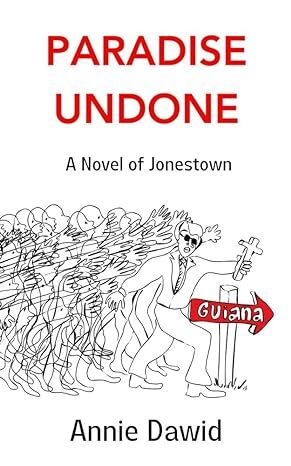
Imagine a community full of rainbow families where everyone comes together in the spirit of equality and fraternal love.
Shy pastor’s daughter Marceline and her new husband Jim Jones found Peoples Temple in the face of rampant hostility and aggression in 1950s segregated AmeriKKKa.
They give hope to the poor, the miserable, the alienated and disenfranchised of all colors, and build a commune in the jungle of British Guyana.
But this Eden too has its serpent. One who is also jealous of God, and where he goes, everyone must follow, even to the grave.
Purchase Link:
My ReviewI was 14 years old in 1978, when the Reverend Jim Jones ordered the members of his congregation to drink a poisonous mixture and follow him to their deaths. He ordered them to give the same mixture to their children, and they blindly followed after him. I remember hearing about it on the news, and as a teenager, I couldn’t understand how something like this could happen. I wondered why a holy man would sacrifice his flock; why someone would follow aan like that, even when they had to realize what the results would be. What makes a man like Jones? Why would he lead those he claimed to love down a road to death? And why would all those people follow him blindly down that road? Were they deceived? Did they go willingly?
It bothered me, but time went on and other sensational events replaced it as the top story, and I didn’t think to much about it. Every once in awhile it would be mentioned on the news, such as when Waco was compared to Jonestown, and I’d think about it then, and it still bothered me. I still didn’t understand. And there was a part of me that needed to understand.
So when Annie Dawid asked me to review her novel about Jonestown, Paradise Undone, I jumped at the opportunity. Dawid has been working on this book since the event occured, so I knew it had been thoroughly researched, because I reviewed her collection of essays, Put Off My Sackcloth Essays, back in 2022. Her need to understand, to make some kind of sense of this horrendous event, was akin to my own, except hers drove her to act. And to make her offer even sweeter, she offered to send me a print copy. Yes please.
In Paradise Undone, by Annie Dawid, the author has written fictional accounts of a factual event. Her characters were all real people, although some of the names have been changed. Dawid offers up several perspectives of the event, sprinkled with actual quotes made by Jim Jones. She offers a glimpse into the minds of those involved, and their stories are told based on the facts that she uncovered through decades of research.
The plot for this story was written back in 1978, and the author doesn’t veer from known facts, all though she sets the records straight in some respects. Much of the tale she weaves is spun from actual Jonestown documents. Dawid presents the events through the eyes of those that were there or were members of The People’s Temple, and the aftereffects of this unthinkable event.
It is a sad and tragic tale, and there are no happy endings. We all know how the story ended. 918 people dead in the jungle of Guyana. But Dawid has offered us a glimpse into the humanity of the situation, enabling us to see that there were real people involved, people who loved and had hopes and dreams, although perhaps misguided.
I found myself relating to the character of Marceleine Jones, who hid behind behind a veil of fiened ignorance as events spiraled out of control as a means of denying culpability. I think it is a common reaction of many women to ignore the traits in their partners which they otherwise could not tolerate in order to maintain the status quo and hold onto the lives that they’ve built for themselves. Marceliene ignored the intolerable until it had spiraled out of her control. The realization of what she’d allowed to happen and her inability to stop it was enough to drink the Fla-Vor-Aid.
I hope that through her research, Annie Dawid found the answers she was searching for. And me? Well, I’m still in awe that a catastrophic event such as this could occur. Although I’m not sure why it shocks me so much, when madmen are shooting up schools, theaters, and churches, or bombing public events so often that it has nearly become a part of normal life for many. But there is something even more disturbing about Jonestown for me, because Jim Jones gained the trust of his flock and then turned that trust against them. That, in itself, amplifies his crimes tenfold above the shooters of Columbine, the Aurora movie theater killer, the Boston Marathon bomber, with their random acts of violence.
Dawid has done her research and recreated this horrific event for us in stunning vividness. I give Paradise Undone five quills.

_______________________________________________
Kaye Lynne Booth does honest book reviews on Writing to be Read in exchange for ARCs. Have a book you’d like reviewed? You can request a review here.
November 17, 2023
Book Review: Ink Witch
 About the Book
About the Book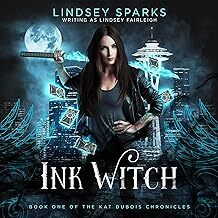
A whole new series from the world of the Echo Trilogy.
Three years ago, the gods abandoned us. We’ve been alone ever since.
Kat Dubois is immortal, and she’s retired. She’s long since hung up her sword and left assassinating immortals to someone else…anyone else. She’s now a hard drinking, sass-flinging Seattle tattoo artist with the innate ability to read people’s fortunes using her charmed deck of tarot cards. Her days of bloodshed are over, and she has nothing but time – an eternity, in fact – to hide from her past.
Until someone from her past shows up on her doorstep with news that her beloved older brother and mentor, Dominic, has gone missing. Kat may be the only person with the right skills – and access to the right magic – to track him down. She must confront her past if she’s to have any chance of finding and saving her brother. She must fight her demons. She must embrace the power within her.
She must become the Ink Witch.
Purchase Links:
Amazon: https://www.amazon.com/Ink-Witch-Lindsey-Fairleigh-audiobook/dp/B06XWLRT8R/
My ReviewI listened to the audiobook, Ink Witch, by Linsey Farleigh. Julia Whelan does a smashing job of narrating this urban fantasy novel about an immortal tattoo artist, Kate Dubois, whose magic is in her ink. Well, not really. The magic is inside of her, but when Kate inks up, watch out. Kate plays the reluctant heroine, coming out of retirement to find and save her brother, who has gone missing, along with others, both magical and mortal. But there’s more to it than at first meets the eye, and the danger ratchets up as Kate uncovers the pieces that will uncover an evil and diabolical plot to take unchallenged control of the magical realm. Her inky magic is just what’s called for to battle the forces of evil, but can she stop her adversaries before their plan can be carried out?
Original and entertaining to the utmost. A fun urban fantasy adventure. I give Ink Witch five quills.

_________________________________________________________
Kaye Lynne Booth does honest book reviews on Writing to be Read in exchange for ARCs. Have a book you’d like reviewed? You can request a review here.
November 14, 2023
Treasuring Poetry Special Remembrance Month Edition: Poet, Frank Prem, discusses his war poetry #poetrycommunity #warpoetry #TreasuringPoetry
Today, I am delighted to welcome prolific and masterful poet, Frank Prem, back to Treasuring Poetry. Frank writes incredibly relatable poetry that covers a wide variety of topics relevant to modern life including the bush fires that raged in Australia a few years ago, Devil in the Wind, working as a psychiatric nurse in an institution, The New Asylum: A Memoir of Psychiatry, as well as collections about war. I have read Frank’s beautiful and moving collections about World War 1, Sheep on the Somme, and the war in the Ukraine, From Volyn to Kherson: Interpretations of the War in Ukraine. Frank also writes romantic poetry, interpretive modern poetry and verse books for children. In the nicest way, nothing is safe from Frank’s poetic pen.
 Tell us a bit about your war poetry collections
Tell us a bit about your war poetry collectionsI developed an interest in the First World War many years ago and was particularly interested in the stories of Australian soldiers and their seeming need to volunteer to fight half a world away on the basis of loyalty to the British Empire and the Mother Country that was England, but also on the basis of a kind of chivalric principle. A moral fever that swept the nation.
I came across books that were written in the more modern historical style of telling stories to illustrate events – using the example of an identified soldier, from an identified town, with family details and background, then tracing their movements into the war and its various theatres and actions.
I found I was able to understand these individuals a little better and to empathise with them and their loved ones a little more than I otherwise could.
I also found myself interested in using images for my own poetic inspiration and that led me to the images held by Australia’s War Memorial. There was one image in particular that started me looking at pictures taken during the war. The image was of a white cross in a field of muddy and bloody craters. The cross marked the grave of Captain Ivor Margetts, much loved and respected by the men he led in battle. By the following day the cross and the grave were gone. They’d been blown to hell by the shelling.

I was tremendously moved by this, and as I searched for a version of that particular image online, I encountered many more, each with a poignant story to tell and many were destined to feature in my book Sheep On The Somme (https://www.amazon.com.au/Sheep-Somme-World-Picture-Poetry/dp/1925963144 ).
More recently, I found myself watching the sabre rattling over the Ukraine that was being perpetrated by Russia and was reminded very clearly of reading I’d done long ago about the beginnings of the Spanish Civil War back in the late 1930s and of the rise of Right-Wing Fascism in Europe during that same period of the 1930s. I was struck by the similarities and the ways in which those events and movements evolved into what became World War II. It was – and remains – quite concerning to see these way events continue to unfold.
As the news and pictures of Russia’s military build-up on the Ukraine border kept emerging, along with the seeming inability on the part of Ukraine to do anything to stop it, I watched events more and more closely.
When Ukraine’s borders were finally breached, there were more photographers and journalists on the spot than has ever been the case previously in a conflict. We were flooded with formal and informal news and masses of un-curated and un-censored images.
During the first nine weeks of the conflict I became engrossed in reading the news and studying the images. And – of course – I began to write.
I produced 3 volumes of poetry interpreting the Ukraine war – two of them will not be released because they used images taken by journalists in the field and I don’t have rights to use those images. The volumes (Bullets Into The Starichi Sky and I Call The Hole The War) sit on my private bookshelf here in my writing studio.
The third volume – From Volyn to Kherson – is a collection of poems in which I have attempted to use such talent for empathy as I possess to interpret the news stories I was reading in a way that enabled any of my own readers to get a sense of what the invasion and the conflict was like as an experience for the everyday people of Ukraine. What if it happened here, in my town? What would it be like to have seventy kilometres of armoured assault vehicles coming to surround and destroy my home town? Or yours?
I like readers to know where the inspiration for these writings has come from and so each individual poem is referenced and has a link to the online sources that I relied on in my writing. After nine weeks I was a little burnt out and had to stop writing, but I follow events over there diligently and worry about what I see happening in the wider world and which still so resembles the events of the 1930s.
What draws you to writing about wars?I’ve encroached a little on this question with my answer above, I think, but I’ll try to elaborate a little more.
In my professional life I was a psychiatric nurse. Back (so many years ago) when I was a student nurse one of the areas of interaction with patients that was taught and stressed was empathy.
As I understood it, empathy was the ability to walk in another person’s shoes. To see things from the perspective of the other person, but not to necessarily sympathise, or accept, merely to understand in order to be able to reflect that understanding back to the patient.
The patients that came my way in psychiatry were invariably involved in and generally overwhelmed by personal chaos. This might have been due to illness, or it might have been due their life being in a mess they could not resolve. They might have been psychotic, depressed, suicidal, or experiencing any number of out-of-control situations.
That tool of empathy has stayed with me, I think, and now reveals itself in my writing. The experience of chaos by a person finds itself being reflected back in my writings.
I think it is in this way that I am attracted to attempt to unravel what a person may be feeling or experiencing in a war zone. Similarly, I find myself writing a lot about the human toll of natural disasters that come close to me or to my little place in the world.
I have always tried to develop my understanding of these things by writing my way through them. To help myself and any subsequent reader to understand by feeling what is happening through my words.
Tell us a bit about how you use photographs and newspaper articles to assist with writing your war poemsWith newspaper articles, I try to extract the meat of the story. That part of the article that is the actual purpose – the reason that it is a story in the first place.
Often enough, there is human interest in the genesis of the article. I then allow the information to assemble itself in a way that I can present it to a reader. For example
What is grandmother doing in the kitchen? Is she cooking Sunday lunch? No. She is cooking Molotov cocktails for others to throw at invading vehicles. And . . . wouldn’t you or I, each do the same if this was happening in our back yard?
With an image, I anticipate that it will have a story to tell. I try not to impose myself and my own current thoughts or fears or desires on it, but to allow the story to be whatever comes.
For example, a golden paper daisy with a bright glow might well have a story to tell that reflects light, and the sun. But equally, it might be a harbinger – a prophet of some kind that draws attention to itself in order to be heard. I don’t know in advance what the story will be, but I try to keep myself out of its road and not to shape the narrative too much.
I have come to know, also, that each image will have a different story to tell to each viewer, so to the extent that I can, I try to facilitate a receptive space for that to occur through what I end up writing. I’ll give an example of how I find a story in a tiny image taken during wartime over a hundred years ago.

The image above is the view from inside a German army dugout in World War I – around 1916. It is from within this space that a small group of individuals fought their war.
When I look at this image, I notice a few things and I feel a few things. In no particular order:
From pitch darkness up into light. A very small doorway.Claustrophobia.Fear.The smell of habitation. Bodily odours – where would the latrine have been?The knowledge of death and destruction and battle rage just outsideMovement of the ground as shells fall outside. Perhaps close.Maybe the sound of enemy troops approaching the bunker to destroy it.What of family. Has this soldier (have I) written them a note to say goodbye?I don’t have a personal experience of war, but I know what fear feels like. I know claustrophobia and the smells of my own body . . . and so on. I can draw on these to understand a little of what the soldier in the dugout might have felt.
The willingness to engage with these elements that come from the image allow me to engage my empathy and to allow a story – which the image itself contains – to be told.
What is your own favourite war poem?I think that my personal favourite of my own written war poems is one that hasn’t featured in a book to date, but was written to be read for a spoken-word poetry slam 2 years ago. The criteria were that it needed to be 2 minutes reading time or less and to include the term ‘full circle’.
The poem told stories in word pictures and referenced images, without actually including them, if that makes sense. I have since recorded it for my YouTube channel and included there the images that the poem references, spanning both World War I and the current Ukraine war.
The link to the poem on YouTube is here: https://www.youtube.com/watch?v=JI3vRaTg0tI .
The text of the poem is below:
THE TRUTH OF TIME
(AS TOLD BY THE PICTURES)
picture 1
a group
of soldiers
are hanging out
of the doors
and windows
of a moving train
leaving Egypt
heading
to the western front
ready
for a stoush
a bit
of a barney
it’s time
to come to grips
with the enemy
and they’re cherry ripe
for a
blue
picture 2
dimitriy
is holding olga –
tightly –
on the platform
a blue train
is nearly ready to leave
she’ll go
to poland
across the border
dimitriy
will join his friends
in the territorials
a week
to practice
how to hold a rifle
and to learn
first aid
then away
he must forget
to be an accountant
he’s
a front-line fighter
now
picture 3
a heap of rubble –
bricks
and half-bricks
timber and concrete
and dust –
lies as a mound
among mounds
it is
a streetscape
an avenue
of homes
destroyed by artillery
a soldier –
rifle
slung over a shoulder –
picks his way
toward camera
there is nothing left
that might hold
use
or meaning
picture 4
the village near kyiv
is a series
of mounds
rubble
that was homes
and houses
a month or so
ago
a woman
is sifting
searching
for something –
anything –
that might
have a use
it’s all been destroyed
by missiles
and artillery
she hasn’t found
a lot
that will be helpful
~
pictures
pictures
they won’t
let me sleep
in the night
they shout at me
that we have come
full circle
and the ukraine
is in 1916 all over again
Who is your favourite war poet?I can’t honestly say I have a favourite war poet, but I have read with a deep sense of connection stories such as All Quiet on the Western Front by Erich Maria Remarque with its empathy for the soldiers of the day. Here is the Wikipedia link: https://en.wikipedia.org/wiki/All_Quiet_on_the_Western_Front .
What is your favourite war poem?I’m aware of many of the great poet writers of the First World War, such as Owen, Sassoon, Brook and Graves, among others, but for my response to this question I have to refer you and readers to a song that I first encountered back when I was a teenager (50 years, who would ever have thought . . .).
The song was performed by a wonderful English Folk ensemble called Steeleye Span, and the song is called Fighting For Strangers. Here is the YouTube link: https://www.youtube.com/watch?v=JI3vRaTg0tI
YouTube LinksIn addition to the links given above, I would welcome viewers, new followers (if any so desire) comments and feedback on my YouTube Channel, where there a re a number of video readings from my war poetry collections (and natural disasters and psychiatry and others). Click on the link below to be taken along to the Playlists available on the Channel.
https://www.youtube.com/@frankprempoetandauthor726/playlists
Robbie and readers, thanks so much for having me along to chat for November’s Treasuring Poetry post.
My review of From Volyn to Kherson: Interpretations of the War in Ukraine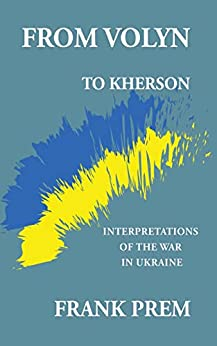
This book is a ‘hard’ read. It exposes the realities of war; the filth, the noise, the fear, and the destruction and death. No civilian wants war, it is something that is imposed on individuals because of factors outside of the man on the street’s control. Civilians, however, bear the brunt of war as the women lose their husbands and sons. The entire population generally loses its collectively homes, food stability, economic stability, access to sanitation, food, and healthcare. Many countries and populations never recover from wars and their populations become unwanted refugees. The sympathy of the unaffected world shrinks rapidly when wars and the resultant refugees impacts on their economies, making the slices of the economic pie for their own populations smaller.
The war in Ukraine hit me especially hard when I read about the Russian soldiers who froze to death in their tanks. Although the Russians were the instigators and aggressors in this war, many of those young men are the same ages as my own two sons, and their dreadful fate couldn’t fail to stir compassion. Young men frequently have a glamorous and inaccurate picture of war when they enlist or are called up. The realities of war quickly displace these notions but it is already too late.
A few stirring stanzas from this collection of freestyle poems:
From fallen (quietly weeping)
“here it is safe
safe enough
to shed
a tear”
From the metro (is also home)
“let the fear
fall away
for a moment while
the anthem
sounds”
From vasylkiv (is fighting on)
This footnote made me shiver: “People used to think about new car or iphone, but nobody was thinking about peace. Now, we are dreaming of it. When old people used to wish each other peace, we didn’t understand what they meant. Now we do.”
and finally, from in okhtyrka (the tsentral’ne)
“they are preparing
the cemetery now
in okhtyrka
adriy
and his platoon
are gone
vacuum bombed
air taken
out
of them
and then
they died”
This is a beautiful and emotion book of poems that will change the way you view war forever.
You can find out more about Frank Prem here:
You can find out more about Frank Prem on his website here: https://frankprem.com/
and on his wordpress blog here: https://frankprem.wordpress.com/blog/
On amazon US here: https://www.amazon.com/stores/Frank-Prem/author/B07L61HNZ4
About Robbie Cheadle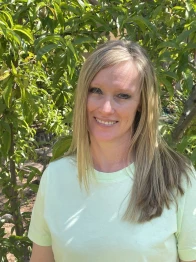
Award-winning, bestselling author, Robbie Cheadle, has published fourteen children’s books and two poetry books. Her work also features in several poetry and short story anthologies.
Robbie also has two novels published under the name of Roberta Eaton Cheadle and has horror, paranormal, and fantasy short stories featured in several anthologies under this name.
The eleven Sir Chocolate children’s picture books, co-authored by Robbie and Michael Cheadle, are written in sweet, short rhymes which are easy for young children to follow and are illustrated with pictures of delicious cakes and cake decorations. Each book also includes simple recipes or biscuit art directions which children can make under adult supervision.
Robbie and Michael Cheadle have recently launched a new series of children’s books called Southern African Safari Adventures. The first book, Neema the Misfit Giraffe is now available from Amazon.
Robbie’s blog includes recipes, fondant and cake artwork, poetry, and book reviews. https://robbiesinspiration.wordpress.com/
You can find example of Robbie Cheadle’s artwork in her art gallery here: https://www.robbiecheadle.co.za/art-gallery/
November 13, 2023
Review in Practice: Get Your Book Selling on Kickstarter
With $300,000 in fundraising across 20+ Kickstarter projects, Russell Nohelty knows a thing or two about running publishing campaigns for novels, nonfiction, anthologies, comics, audio dramas, and more. He tested his system with 70+ authors with great results, and is now generously sharing everything he knows about the platform for authors with an audience of zero as well as those with a fanbase.
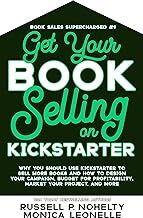
In this book you’ll find:
Why using crowdfunding is an important avenue for authors and how authors are currently using itChoosing the right project for Kickstarter and designing your campaignBudgeting your campaign for profitability (and why it’s critical for your success!)The types of messages you should send to your audience vs. cold trafficDelivering your rewards for your Kickstarter projectKeeping momentum going after KickstarterHailed as one of the most comprehensive books on Kickstarter for Publishing projects, this book is a must-have if you’re Kickstarter-curious or planning your campaign.
Purchase Link: https://www.amazon.com/Your-Book-Selling-Kickstarter-Profitability-ebook/dp/B09TQ4G5S6
_______________________________________________
I’m not a big name author, and when I first started hearing talk of using Kickstarter to sell books in 2022, I scoffed, thinking it was just another way to beg for money in an official capacity. Then Bryan Sanderson came along and ran a campaign that funded and made $4 million on the opening day, making authors everywhere sit up and take notice. You can find out more about how Sanderson’s campaign helped to pave the way for authors in this article by Dean Wesley Smith: https://deanwesleysmith.com/brandon-sanderson-kickstarter/.
Even after watching Sanderson’s success, I was skeptical. Just because it worked for him, he’s a big name author, and that doesn’t mean it will work for me. Then Kevin J. Anderson took his publishing students through a campaign set-up step-by-step, showing us how to do one properly, with his Dragon Business campaign. When his campaign funded on the first day, and by the end had raised $42,000, I decided this was a method of direct selling that I wanted to employ.
Getting Your Book Selling With Kickstarter, by Russell P. Nohelty and Monica Leonelle is a helpful book if you are thinking about using Kickstarter as a method of direct selling for your author business. This book helped me to decide on my projects, figure out my budget for the campaigns, choose my rewards, and set my funding goals. As a successful campaigner, Nohelty offers ideas for rewards, backer perks, stretch goals and add-ons, taking into consideration ease of production, ease of delivery, storage and tracking, and appeal to your audience. He offers advice on how to set reward tiers, adding digital items to physical ones to add value and build excitement in your backers. Plus so much more. He shares his proven system for running a successful Kickstarter campaign.
To date, I have done two campaigns for my own books, and I have two more planned for 2024. I’m practicing a business model similar to that of author Joanna Penn, although I don’t have my own store yet. Her model is to offer books direhctly first, through Kickstarter, and then through her own store on her site. Eventually, she makes her books available through distributors, but authors gets to keep more of their royalties when they sell direct, so going the direct route first makes sense. (You can learn more about Joanna Penn’s business model in her interview with Mark Leslie Lefabvre on the Stark Reflections podcast, episode #327: https://starkreflections.ca/2023/10/10/episode-writing-the-shadow-with-joanna-penn/
I’m an unknown author with a small independent press, so I needed to start small. My first campaign for Delilah and the Women in the West adventure series offered mostly digital rewards. The only physical item offered was the signed print copy of the book. For my top tier, I offered my backers a chance to name a character in book two, which I thought was pretty cool. At least two backers thought it was pretty cool, too.
Nohelty mentions steps in preparation for a campaign which hadn’t crossed my mind, such as promoting through my email list, which is a great idea. He suggests breaking down email lists so you can reach out to the readers in your target audience specifically. This is important, because once you send out all of your intensive promotions for your Kickstarter campaign, people may be tired of hearing from you. You don’t want folks to get annoyed and unsubcribe because you’ve been annoying in your promotions. The idea is to tailor your promotions to different specific lists, so no one is totally bombarded. Nohelty also suggests reposting all of your email content on social media, as well. Also, probably a good idea if strategically placed. But, I have to tell you-one of the really cool thing about Kickstarter is the built in email list, which keeps the lines open and goes out to all of the backers of the campaign, even long after the campaign has ended, so you have an open line of communication with all of your Kickstarter fans.
Emailings are something that I haven’t worked a whole lot with. That may change as my own mailing list grows. My marketing has always gone through this blog, Writing to be Read, which I then broadcast across my social media channels. This works fairly well, but I realized that I wasn’t targeting my specific audiences in this way. This made me realize that Nohelty’s email marketing might be more effective for more specific targeting. As I prepare for my third Kickstarter campaign, for Sarah, Book 2 in the Women in the West Adventure series, I may look closer at ways in which I might utilize email marketing to my advantage. I’m still a little hesitant though, as Nohelty recommends send frequent emails, (more than one a day). That really seems a bit much to me, but Nohelty stands behind his system.
I set the goal at $500 for both campaigns, because I felt it was a reasonable reach for little old me, who is not a bestselling, or even a known author. Nohelty backs up the advice given on the Six Figure Authors podcast, episode #048 (https://www.youtube.com/watch?v=5SvQ5hJ1i0Q). They recommended that you set a goal that is reachable and still brings in enough to cover your expenses and see the project through. A good point made in the podcast was that if you set your goal too high and you don’t fund, then you walk away with nothing, so a lower goal may be better than no money at all. They also pointed out that once your campaign funds, anything else you bring in above and beyond that is just icing on the cake. Kevin J. Anderson’s goal for his Dragon Business Kickstarter campaign was $10,000, because that is a reasonable goal for a bestselling author to shoot for, but he brought in $42,000. Nohelty recommends consideration for the size of your mailing list when setting funding goals.I think $500 is a reasonable goal since my email list is still pretty short and I’m an unknown author.
When I ran my second campaign for The Rock Star & The Outlaw offered more physical rewards because I hadn’t finished writing the book at the time that I set it up, and I didn’t realize there would be potential for a second book. (Yes, the ending surprised me, too.) So, for the top tier on this one, I offered a goodie bag with the WordCrafter logo with a poster and a signed print copy of the book, as well as the early digital copy which all backers above the $5 received.
Nohelty recommends using more digital rewards, because they are easy and cost you less to fulfill. The physical rewards surely made the cost of the second campaign higher. And if you do offer physical rewards, be sure you figure the shipping costs in to the cost of fulfillment. Since I set the same goal for both campaigns, I didn’t make as much from the second one. Definitely something to think about.
He also offers advice on setting your tier levels. He recommends $1, $10, $25, $50, and $250 tiers. I’ve backed a few campaigns now, and from what I’ve seen, each one handles setting the tier levels differently. Mine each had three tier levels, the first two being $5 and $25. For my first campaign, the top tier was $50. For my second campaign, I raised the top tier to $75, because it was mostly physical rewards which would need to be delivered via snail mail.
Another good piece of advice Nohelty offers involves offering merchandise for rewards. Physical items require you to calculate shipping into the overall cost for the fulfillment of each reward. Print books can be shipped media mail, which is less expensive, but as soon as you add any type of merchandise, that is no longer an option. So, when deciding on rewards, add-ons, stretch and flash goals, the cost of shipping must be figured in so you don’t overextend yourself and cut deeply into your profits.
Nohelty explains early bird perks-setting rewards to be available only to early backers with a point at which it is no longer available. I haven’t done this yet, but this strategy appeals to me and has me thinking about what I could offer as incentive to jump into the campaign on Day 1. This idea might be helpful, since I am an unknown author and my campaigns so far haven’t funded until near the end. It looks like Nohelty offers perks for backers and perks for Week 1 backers, so if you back on Day 1, you would receive both rewards, which is pretty cool. In fact, Nohelty offers different perks every week, which means that you can get extras if you back his campaign at any point. He suggests a perk for backing in the first 48 hours, and a perk a week for the duration of the campaign.
Stretch goals are offered when you hit a certain level of funding to keep the money climbing, and I’ve seen the bigger authors use them. They are usually added after funding, and since my campaigns didn’t fund until near the end, there wasn’t really a chance for me to use them. The second campaign funded three days before the end of the campaign, so I offered a stretch goal reward if we reached an additional $100, bringing our total to total $600. We didn’t make it, and thus ended my brief experience with stretch goals.
Flash goals were something I had heard of, but didn’t really understand what they are. According to Nohelty, they are perks given to ‘recharge momentum’ on the campaign. They are brief opportunities, i.e. “Anyone who backs the campaign in the next twenty-four hours gets a bonus.” They are designed to intice those following your campaign into taking the plunge and becoming a backer, thus keeping your totals rising toward your goal, or if fortune is with you, past it and even higher.
I have to say, Russel Nohelty’s Get Your Book Selling on Kickstarter has been extremely helpful as I look forward to future campaigns. In addition to that discussed above, he offers advice on how to set-up your Kickstarter and appeal to your audience, some of the challenges you might run into, how to keep your campaign’s momentum going, and more.
Other resourcesWMG Publishing offers a free course from Dean Wesley Smith, Kickstarter Best Practices for Fiction Writers here: https://wmg-publishing-workshops-and-lectures.teachable.com/courses/
_____________________________________________________
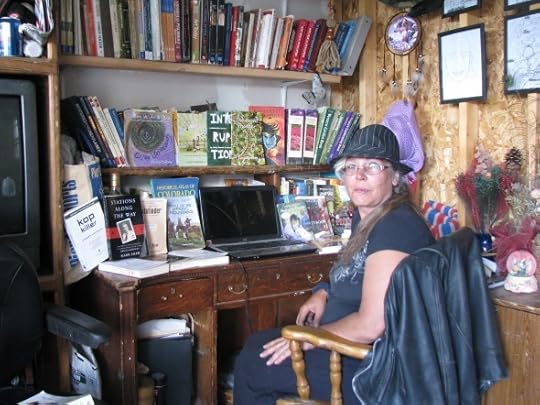
For Kaye Lynne Booth, writing is a passion. Kaye Lynne is an author with published short fiction and poetry, both online and in print, including her short story collection, Last Call and Other Short Fiction; and her paranormal mystery novella, Hidden Secrets; Book 1 of her Women in the West adventure series, Delilah, and her Time-Travel Adventure novel, The Rock Star & The Outlaw. Kaye holds a dual M.F.A. degree in Creative Writing with emphasis in genre fiction and screenwriting, and an M.A. in publishing. Kaye Lynne is the founder of WordCrafter Quality Writing & Author Services and WordCrafter Press. She also maintains an authors’ blog and website, Writing to be Read, where she publishes content of interest in the literary world.
_________________________________________________________
Want exclusive content? Join Kaye Lynne Booth & WordCrafter Press Readers’ Group for WordCrafter Press book & event news, including the awesome releases of author Kaye Lynne Booth. She won’t flood your inbox, she NEVER sells her list, and you might get a freebie occasionally. Get a free digital copy of her short story collection, Last Call and Other Short Fiction, just for joining.
Writing to be Read
- Kaye Lynne Booth's profile
- 37 followers




